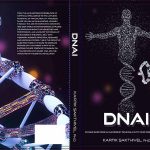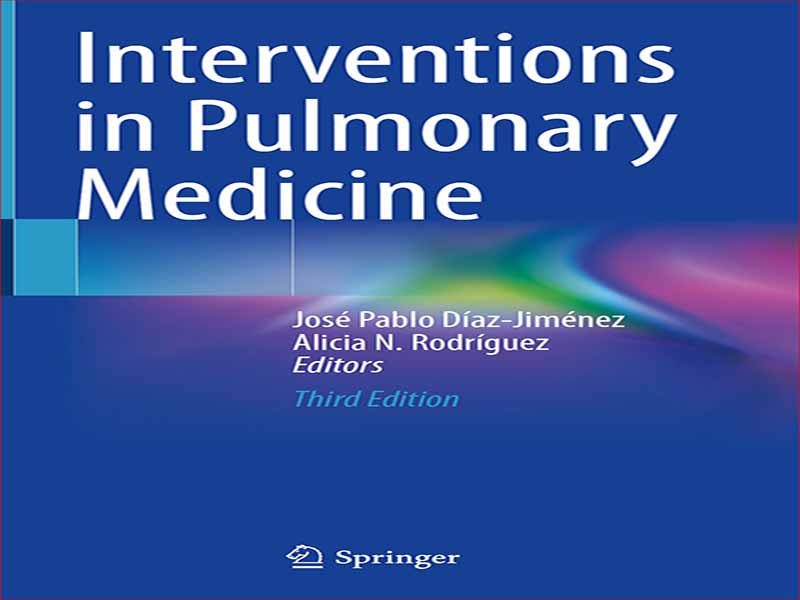- عنوان کتاب: Interventions in Pulmonary Medicine
- نویسنده: José Pablo Díaz-Jiménez
- حوزه: بیماریهای تنفسی, ریه
- سال انتشار: 2023
- تعداد صفحه: 751
- زبان اصلی: انگلیسی
- نوع فایل: pdf
- حجم فایل: 21.5 مگابایت
ویرایش سوم کتاب مداخلات در پزشکی ریه در بحبوحه همهگیری کووید-19، روزهای سختی برای متخصصان ریه، به ما سپرده شد. همه گیر آمد تا زندگی حرفه ای ما را تغییر دهد و ما را مجبور کرد عمدتاً بر روی آن دسته از بیماری های ریوی مرتبط با ویروس تمرکز کنیم. با این کار، زمان جلسات حضوری حرفهای، کنگرهها، سمپوزیومها و حتی گفتگوهای معمولی تنها با جلسات آنلاین جایگزین شد و ما تعداد زیادی به روز رسانی در مورد وضعیت، اخبار پزشکی روزانه داشتیم که ما را بیدار نگه داشت. تا به امروز با تحولات. اکنون زمان ایجاد تعادل یا نتیجه گیری نیست. آینده مزایا یا معایبی را که این حبس به وجود آورده است، خواهد گفت. درست است که تقریباً 3 سال است که ما چیزهای زیادی یاد گرفته ایم، اگرچه همزیستی روزانه ما با همکاران بسیار محدود بود. آسیبپذیری، شکنندهترین جنبه بشریت، ناگهان ظاهر شد و جنبههایی را برجسته کرد که به ما آموختند در مورد چگونگی مدیریت شرایط بحرانی، نحوه مدیریت منابع اداری و اقتصادی و چگونگی به حرکت درآوردن همه جنبههای علمی لازم برای مقابله با جهان فکر کنیم. پاندمی. بسیاری از چیزهای خوب نیز به وجود آمد: ارزشهای انسانی مانند عشق، همبستگی، همدلی و سخاوت نسبت به نیازمندان نشان داد که ما ظرفیت ذاتی داریم که با هم برای خیر و صلاح همهمان کار کنیم و برای کاهش درد و رنجی که این امر به وجود آمده است، متحد شویم. بیماری همه گیر که بر نسل بشر وارد شده است. در مدت زمان بی سابقه ای ویروس شناسایی و نقشه برداری شد و توسعه درمان ها و واکسن های جدیدی را تسهیل کرد که تا حدی به ثمر نشستند که امیدواریم این بیماری اکنون تقریباً تحت کنترل باشد. همانطور که در محتوای کتاب مشاهده میشود، پیشرفتهای جدیدی از نظر پیامدهای علمی و عملی در رابطه با استفاده از تکنیکهای مداخلهای برای عوارض ریوی COVID-19 رخ داده است. به همین ترتیب، خواننده، مطابق با پیشرفت تکنیکهای آندوسکوپی، فصلهای جدیدی را خواهد یافت که دانش و مشارکت ما را در این مورد نشان میدهد. ما از اولین انتشارات مربوط به دانش و استفاده از برونکوسکوپی، از پیشگامانی مانند گوستاو کیلیان و شوالیه جکسون در پایان قرن نوزدهم و آغاز قرن بیستم، راه زیادی را پیموده ایم. در آن زمان بود که اولین پایه ها برای آنچه امروزه برونکوسکوپی مدرن نامیده می شود، گذاشته شد. در سال 1949، روبرت مونود در مقدمه کتاب فرانسوی باشکوه خود برونکولوژی، تکنیک اندوسکوپی و پاتولوژی تراکئوبرونشیک نوشته آندره سولاس و پیر مونیر-کوهن گفت که ماورایی ترین دستاوردهای ریه شناسی و تکنیک های رادیولوژیکی، سمع و شنود دقیق بوده است. سومین اکتساب، تراکئوبرونکوسکوپی دهانی، جای خود را به پایه ها و شکوفایی برونکوسکوپی مداخله ای داد. مسیر اولین برونکوسکوپیست ها، متخصصان بزرگ در استخراج اجسام خارجی، چروک های برونش ریوی و مکانیسم های انسداد برونش، در ابتدا آسان نبود. آنها همچنین باید همه گیرها، جنگ های جهانی پر از رنج و چالش های بزرگ را مدیریت می کردند. زمینه برونکوسکوپی فعلی، که اکنون ضروری است و در بسیاری از پیشرفتهای مدرن در تشخیص و درمان بیماریهای تنفسی نقش دارد، به لطف مشارکت آن پیشگامان آسانتر شد. بیشتر پیشرفتهای فنی اخیر در صنعت به پیشرفت و بهبود برونکوسکوپها و تجهیزات جانبی آنها کمک زیادی کرده است. با گسترش برونکوسکوپی مدرن در اواخر دهه شصت قرن بیستم، مانند توسعه برونکوسکوپی فیبر نوری و معرفی آن به عمل بالینی توسط شیگتو ایکدا، و پیشرفت هایی که توسط پروفسور J.F. Dumon در اوایل دهه هشتاد به دست آمد، مداخله مدرن. ریه در عرصه پزشکی به طور محکمی جا افتاده است. ما دوست داریم پروفسور J.F. Dumon را به عنوان لئوناردو داوینچی برونکوسکوپی سفت و سخت در نظر بگیریم، نابغه ای که ایمن ترین برونکوسکوپ و ابزارهای باورنکردنی را برای انجام درمان در درخت تراکئوبرونشیال به منظور بهبود کیفیت زندگی بیمار طراحی کرده است. اگرچه او یک سال پیش ما را ترک کرد، اما برای ما افتخار بود که از او بیاموزیم و او را مربی و دوستی نزدیک به 40 سال بدانیم. در میان بسیاری از ویژگی های او، ما به ویژه تمایل و سخاوت او را برای آموزش آسان بها می دهیم. او برای همه ما تنگ خواهد شد و به یاد او خواهد بود. دومون دوست داشت برونکوسکوپی مداخله ای را به عنوان “هنر برونکوسکوپی” تعریف کند و ما، متخصصان ریه مداخله ای، باید خود را صنعتگر بنامیم. بنابراین، مایلیم از همه همکاران صنعتگر در استفاده از برونکوسکوپی که علیرغم تقاضاهای پزشکی و شخصی بسیار زیاد در این دوران سخت، تخصص خود را در این کتاب به اشتراک گذاشته اند، تشکر کنیم. بدون کار ارزشمند آنها، انتشار این ویرایش سوم مداخلات در پزشکی ریه غیرممکن بود.
The third edition of the book Interventions in Pulmonary Medicine was entrusted to us in the midst of the COVID-19 pandemic, hard times for pulmonologists. The pandemic came to change our professional life and made us focus mainly on those pulmonary conditions related to the virus. With this, the time of professional in-person meetings, congresses, symposiums, and even casual conversations was replaced by online meetings only, and we had a massive number of updates on the situation, day-to-day medical news that kept us up to date with the developments. Now is not the time to make a balance or arrive at conclusions; the future will tell the advantages or disadvantages that the confinement brought about. It is true that for almost 3 years we have learnt many things, even though our daily coexistence with colleagues was very limited. Vulnerability, the most fragile aspect of humanity, suddenly appeared, highlighting aspects that taught us to reflect on how to manage critical situations, how to handle administrative and economic resources, and how to put in motion all the necessary scientific aspects to deal with the world pandemic. Many good things arose too: human values such as love, solidarity, empathy, and generosity toward those in need showed that we have an innate capacity to work together for the good of us all, to team up to alleviate the pain and suffering that this pandemic brought upon the human race. In record time the virus was identified and mapped, facilitating the development of new therapies and vaccines that have borne fruit to the point that the disease is now, hopefully, almost under control. As can be seen in the content of the book, there are many new developments in terms of scientific and practical repercussions that have occurred regarding the application of interventional techniques for pulmonary complications of COVID-19. Likewise, the reader will find, in accordance with the progress of endoscopic techniques, new chapters that will illustrate our knowledge and contributions on that matter. We have come a long way since the first publications on knowledge and use of Bronchoscopy, from pioneers such as Gustav Killian and Chevalier Jackson at the end of the nineteenth century and the beginning of the twentieth century. It was at that time that the first foundations were laid out for what is now Modern Bronchoscopy. In 1949, Robert Monod said, in the prologue to his magnificent French book Bronchologie, Technique endoscopique et Pathologie trachéobronchique by André Soulas and Pierre Mounier-Kuhn, that the most transcendental acquisitions of Pulmonology had been auscultation and finetuning of the radiological techniques and later a third acquisition, peroral tracheo- bronchoscopy, giving way to the foundations and flourishing of Interventional Bronchoscopy. The path of the first bronchoscopists, great experts in the extraction of foreign bodies, broncho-pulmonary suppurations, and bronchial obstruction mechanisms, was not easy at the beginning. They also had to manage pandemics, world wars full of suffering, and of great challenges. The current bronchoscopy field, now essential and involved in many modern advances in the diagnosis and treatment of respiratory diseases, was made easier thanks to the contribution of those pioneers. Most recent technical advances in the industry have contributed much to the progress and improvement of bronchoscopes and their accessory equipment. With the expansion of modern bronchoscopy in the late sixties of the twentieth century, such as the development of the fiberoptic bronchoscope and its introduction into clinical practice by Shigeto Ikeda, and the advances brought by Prof. J.F. Dumon in the early eighties, the Modern Interventional Pulmonology was firmly established in the medical arena. We like to consider Prof. J.F. Dumon as the Leonardo da Vinci of Rigid Bronchoscopy, a genius who designed the safest bronchoscope and incredible tools to perform treatments in the tracheobronchial tree in order to improve the patient’s quality of life. Though he left us a year ago, it was an honor for us to learn from him, and to consider him a mentor and a friend for almost 40 years. Among his many qualities, we particularly value his willingness and generosity to teach in an easy way. He will be missed and remembered by all of us. Dumon liked to define Interventional Bronchoscopy as “the art of Bronchoscopy,” and we, interventional pulmonologists, should call ourselves artisans in that regard. And so, we would like to thank all the artisan collaborators in the use of bronchoscopy who have participated sharing their expertise in this book, in spite of the overwhelming medical and personal demands during this difficult time. Without their invaluable work, the publication of this Third Edition of Interventions in Pulmonary Medicine would have been impossible.
این کتاب را میتوانید بصورت رایگان از لینک زیر دانلود نمایید.
Download: Interventions in Pulmonary Medicine
































نظرات کاربران